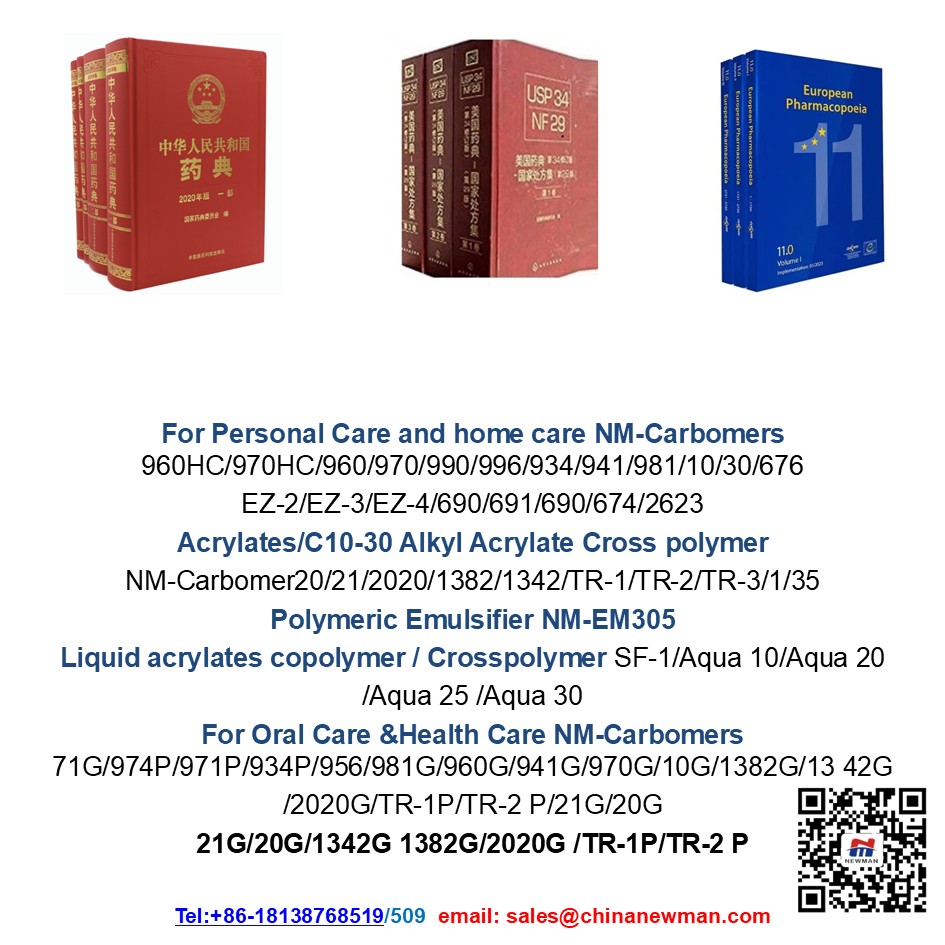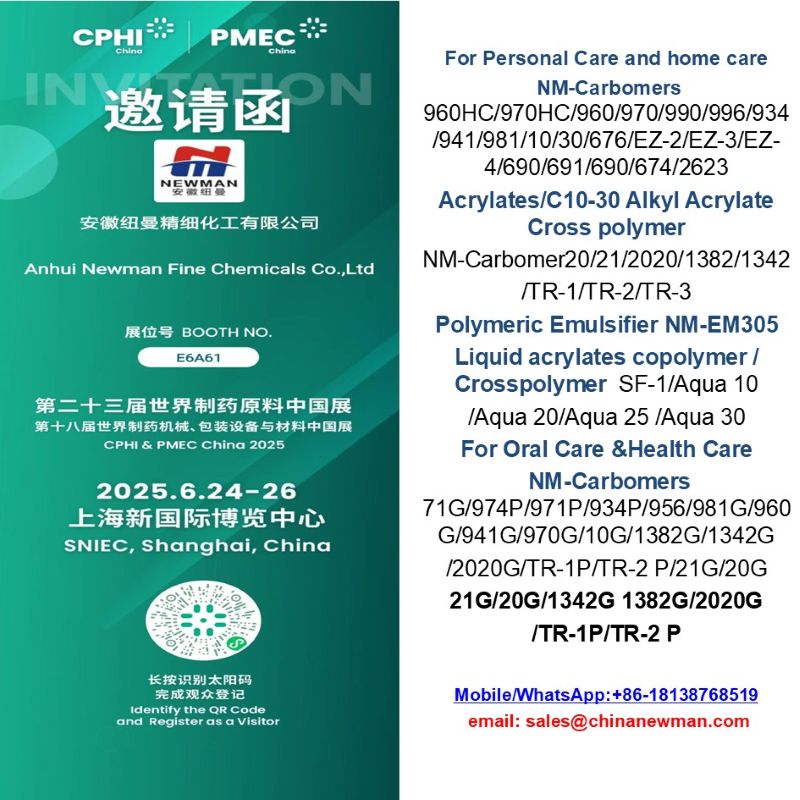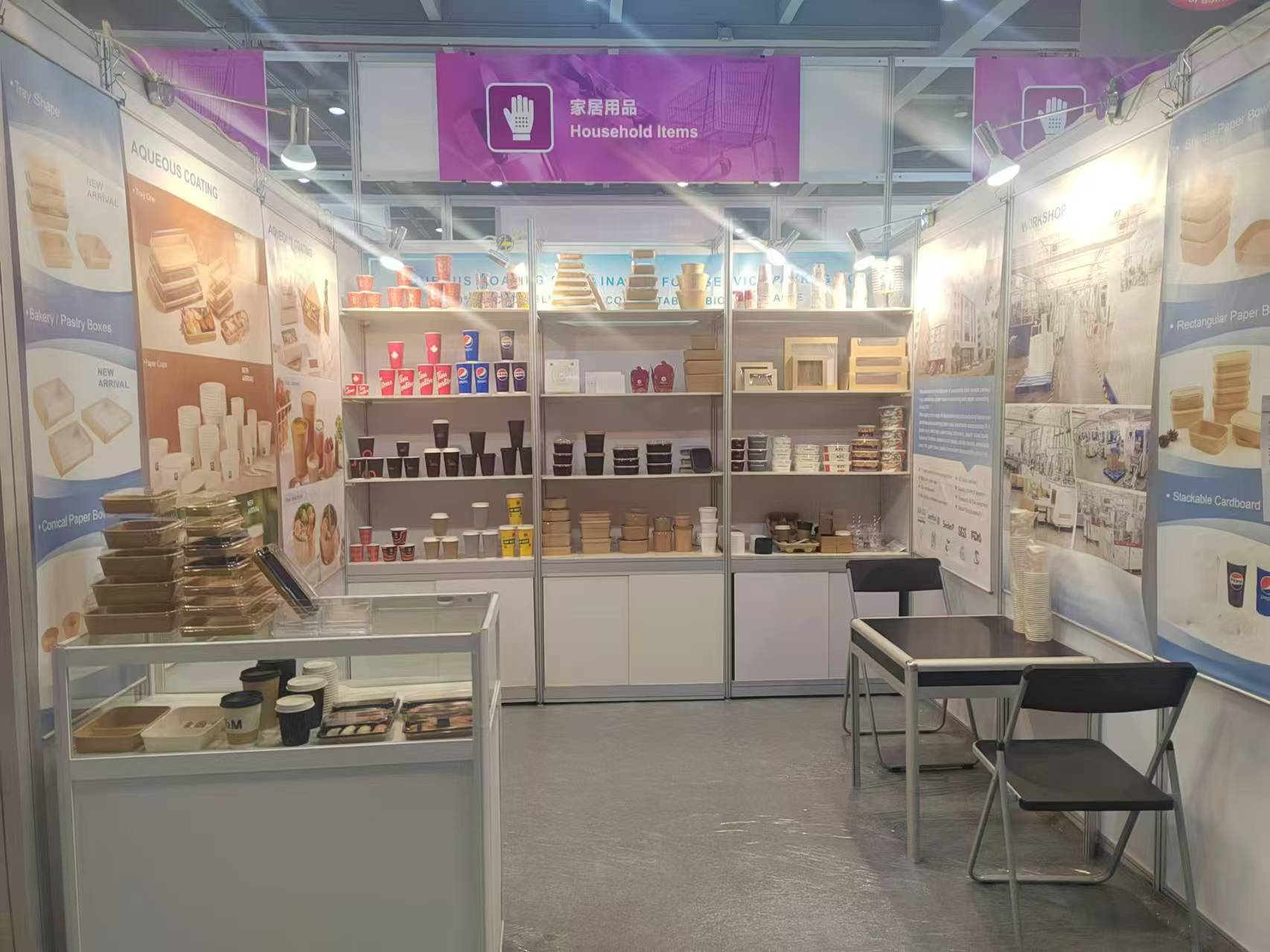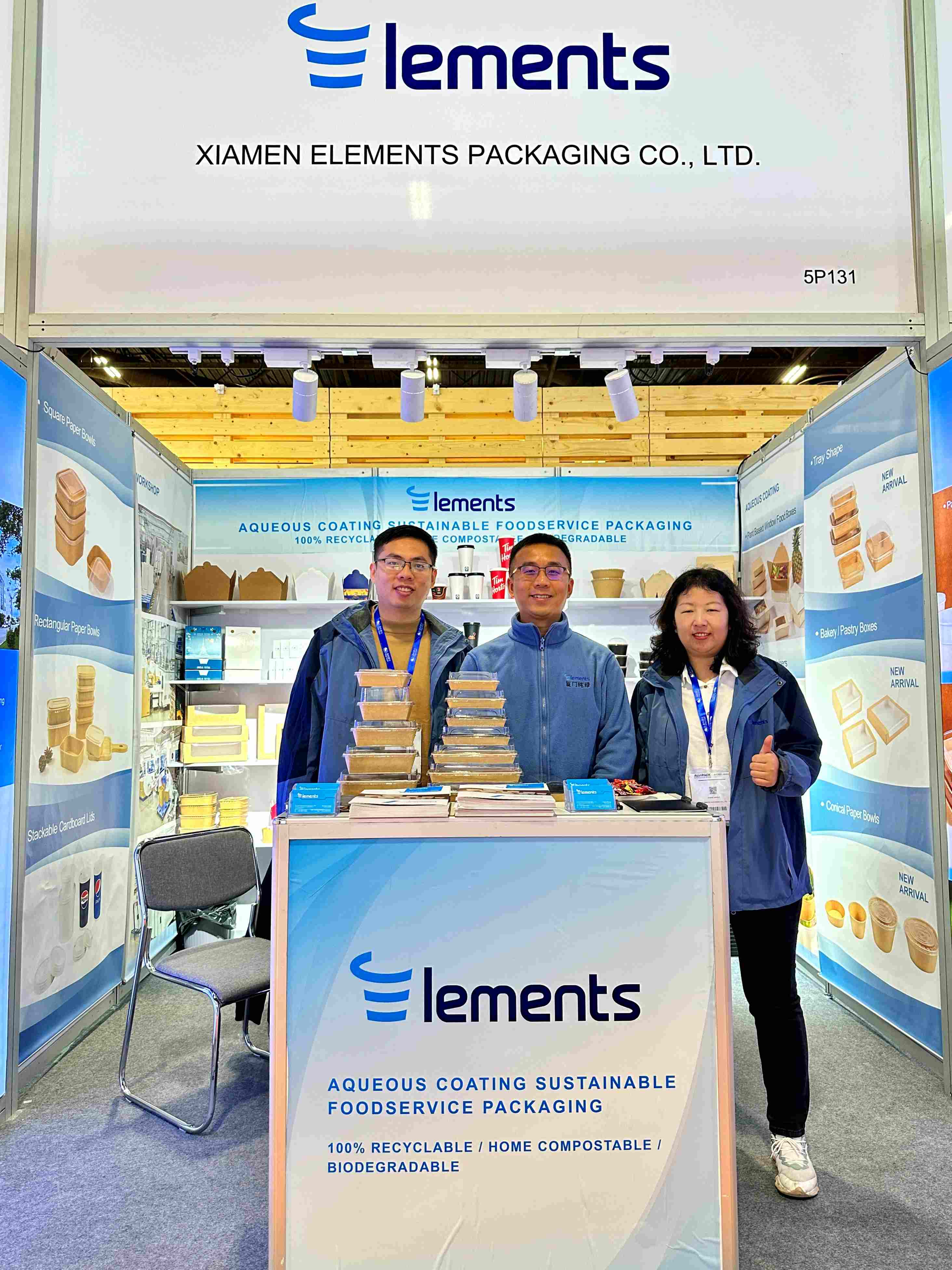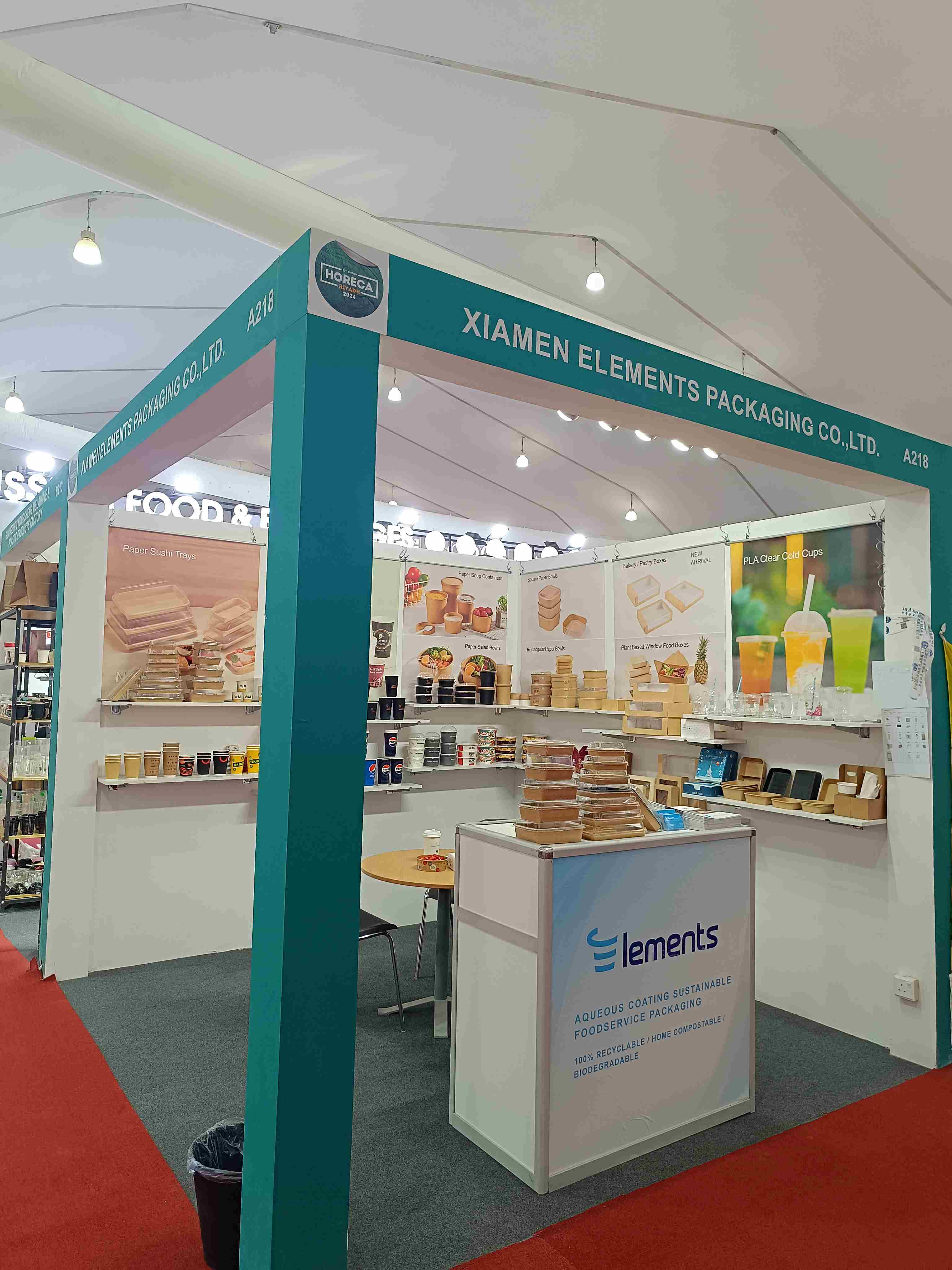The current domestic beauty market shows a clear two-sided trend. On one hand, the overall market growth has slowed down, and in some months, it even declined. Consumers' purchasing behavior has become more rational, and they no longer blindly pursue brands but rather pay more attention to the efficacy, safety, and cost-effectiveness of products. On the other hand, the sub-sectors such as efficacy skincare and post-treatment for medical aesthetics have maintained a high growth rate. The group of ingredient enthusiasts is expanding continuously, and they are increasingly in-depth in their understanding of product ingredients, demanding higher quality and efficacy of the ingredients.
With the segmentation of consumption, consumers are paying more attention to the ingredients and efficacy of beauty products, and the technical content of raw materials has become the key to enhancing product competitiveness. Anhui Newman Fine Chemicals Co., Ltd., are the top leading manufacture of carbomer and acrylates copolymer, We have always placed great emphasis on technological innovation. Under the consumption classification trend, we have increased research and development investment and continuously optimized the performance of carbomer products. As a global supplier, Anhui Newman actively participates in international exhibitions and collaborates with customers from over 120 countries. The company has obtained certifications for the ISO9001 quality system, 14001 environmental system, 45001 occupational health and safety system, as well as the Ecovadis certification for the social responsibility system and received a silver award. All products have completed registration with the EU EU REACH and the National Medical Products Administration (CDE, NMPA).
Currently, in order to ensure smooth entry into Muslim regions such as Southeast Asia and the Middle East in line with Muslim customs, some countries (such as Indonesia) have expanded the certification scope to service areas. We are conducting Halal certification (cleaning and purity certification) for all of our products.
Newman carbomer has gained increasing favor from global customers due to its superior quality and diverse product range. In the personal care products sector alone, Newman Carbomer has over 36 models. As a water-soluble rheological modifier, it can meet the constantly changing market demands. We continuously innovate and introduce a series of Carbomer products with different properties, ranging from powder to liquid, including wide pH range compatibility and electrolyte resistance. For instance, we have not only launched traditional products with high-cost performance such as Newman Carbomer 996,970,990 and 981, but also improved Carbomer products like 20, 21, 10, 30 and 35. The polymer emulsifier NM-Carbomer TR series products are to meet the demands of customers. Meanwhile, liquid carbomer NM-Carbomer SF-1, Aqua 30. NM-Carbomer Aqua10, NM-Carbomer Aqua 20 and NM-Carbomer Aqua 25 were also launched. As an easy-to-use liquid form, due to the special chemical structure, It has a good synergistic thickening effect with surfactants, micelles and hydrophobic raw materials, and has excellent salt resistance. As shown in Table 1
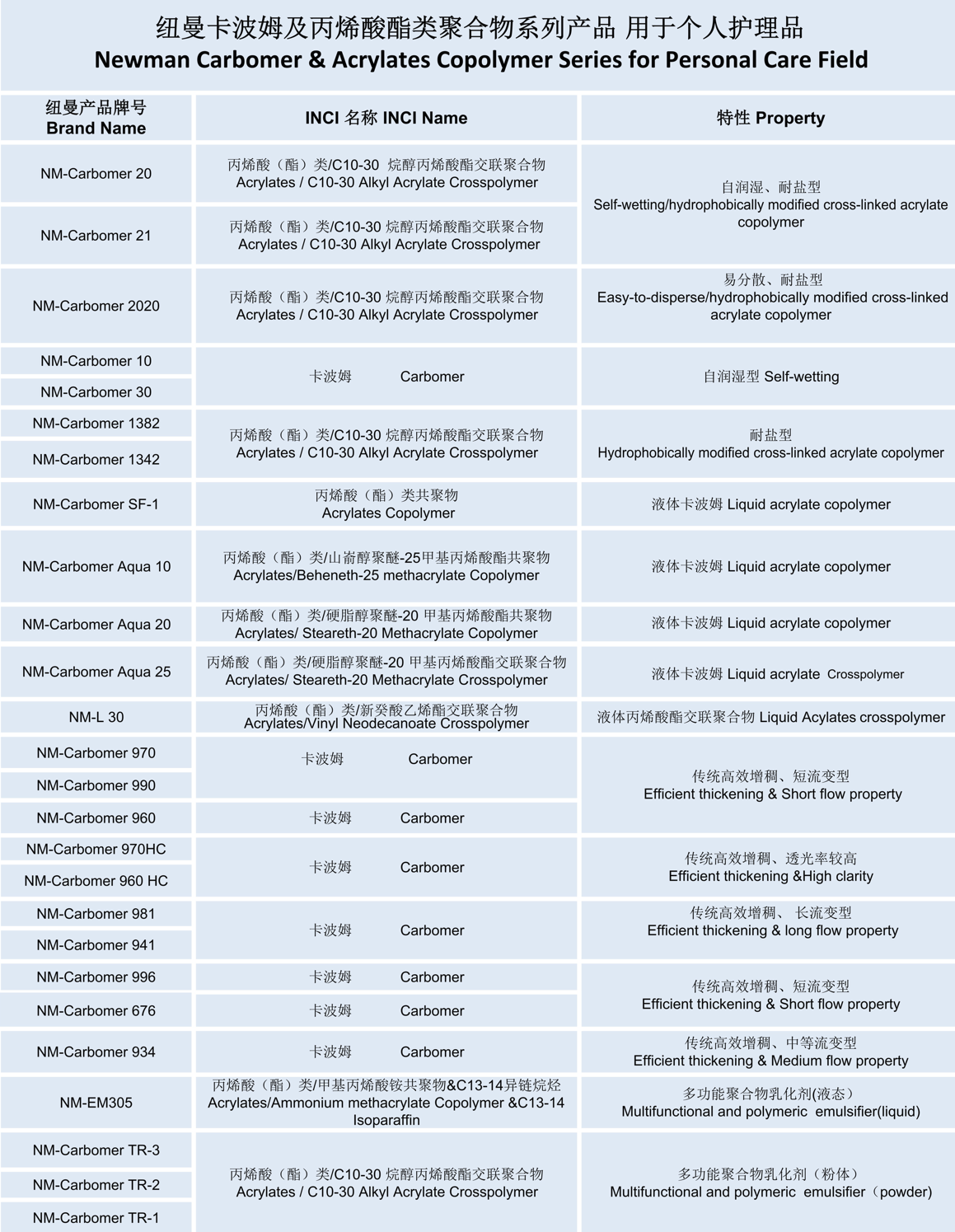
At the same time, we continue to launch film forming, thickening and lubrication polyvinylpyrrolidone homopolymer such as PVP K30, K90, K17, K25, and PVP/VA copolymer such as PVP/VA64, PVP/VA73 and other series of products.
The construction of a compliance system is the bottom line that Anhui Newman must adhere to, and it is also the passport for entering the market. We closely monitor the latest updates of relevant domestic and international regulations and standards to ensure that all products meet the latest requirements. From raw material procurement to production processing, and up to product delivery, each stage must undergo strict quality control and safety inspections, and a traceable quality system must be established.
In the future, as the consumption market continues to evolve, we will continuously strengthen technological innovation, deepen the global resource layout, and enhance supply chain agility. We will maintain a leading position in the fierce market competition.

